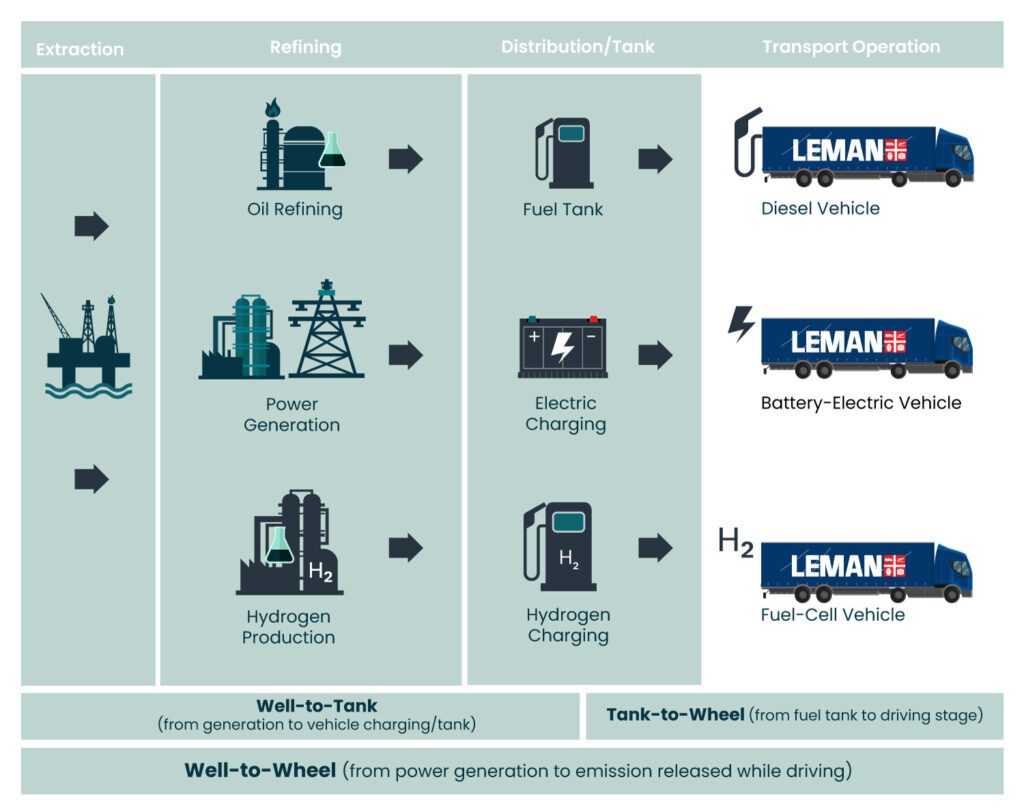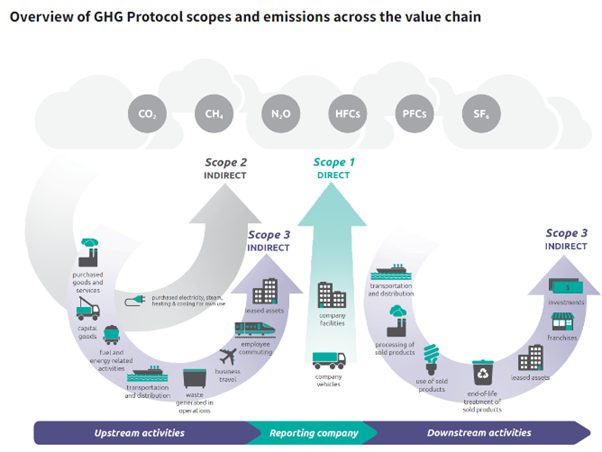Sustainability Terminology
When it comes to moving towards a sustainable future, being consistent on the language and terminology is important. On this page, we aim to provide you with an understanding of the terms used in sustainability and climate change.



We measure both ours and our customers’ carbon footprint
As a company that strives to reduce the climate impact of our operations, we measure our own carbon footprint, and support our customers’ environmental ambitions by allowing our customers to see CO₂ emissions per shipment free of charge. The data is provided by EcoTransIT – one of the leading emission reporting systems, compliant with GHG protocol, GLEC Framework and EN16258.

Scope 1 includes direct emissions from owned or controlled sources by the company (e.g. emissions from owned or controlled boilers, vehicles, forklifts etc.).
Scope 2 includes indirect emissions from purchased electricity, heat and cooling consumed by the company.
Scope 3 includes all other indirect emissions from activities not fully owned or controlled by the company (e.g. subcontracted air, sea, road and rail freight). Due to the asset-light business model of LEMAN, most of LEMAN’s CO₂ emissions would be accounted in scope 3.
The GHG Protocol
The Greenhouse Gas (GHG) Protocol is the leading international standard to measure and manage greenhouse gas (GHG) emissions from private and public sector operations, value chains and mitigation actions. It describes how CO₂-emissions should be quantified and reported as CO₂-equivalents under three different emission types. These are referred to as Scope 1, 2 and 3.
Source: WRI/WBCSD Corporate Value Chain (Scope 3) Accounting and Reporting Standard

How to read the CO₂ emissions data
Well-to-Tank (WTT): WTT refers to a method used to calculate the energy consumed and GHG emitted from the moment of production of a transport fuel (petrol, diesel, electricity, natural gas) to the moment of fuel supply (at the recharging or refuelling station).
Tank-to-Wheel (TTW): TTW refers to a method used to calculate the energy consumed and GHG emitted from the point at which the transport fuel is transmitted to the vehicle (at the recharging or refuelling station) to the moment of its discharge (consumption of the fuel or electricity, while on the move).
Well-to-Wheel (WTW): WTW refers to the holistic approach of calculating the energy consumed and GHG emitted by a transport fuel from its production, over its distribution and supply up to its use. This generic term therefore includes Well-to-Tank and Tank-to-Wheels.
CO2 (carbon dioxide): It is the dominant greenhouse gas in the world. Carbon dioxide is produced by the combustion of carbonaceous fuels, including all fossil fuels. For a given energy source, the amount of CO2 generated depends directly on the amount of fuel and thus the energy converted.
CO2-e (carbon dioxide equivalents): A term for measuring different greenhouse gases in a common unit. For any quantity and type of greenhouse gas, CO2e signifies the amount of CO2 which would have the equivalent global warming impact. This is the figure usually reported in all sustainability reports.
NOx (nitrogen oxides): These are mainly produced in combustion processes in plants and engines. Low emissions also occur in certain industrial processes and in agriculture. Ecological impacts: eutrophication, smog, ecotoxicity, human toxicity
SOx (sulphur oxides): It is mainly generated during combustion processes of fossil fuels such as coal and oil by oxidation of the sulfur contained in the fuel. Ecological effects: acidification of soil and water, ecotoxicity, humotoxicity
PM10 (particulate matters): The main sources in urban areas are diesel-engined road vehicles, industrial, public, commercial and residential combustion. These are tiny pieces of solid or liquid matter in the atmosphere that can be carried deep into the lungs where it can cause inflammation and a worsening of the condition of people with heart and lung disease.
NMHC (non-methane hydrocarbons): They are the major classes of organic pollutants and the key ozone (O3) precursors in atmosphere, which can significantly affect the atmospheric photochemical chemistry and human health. Their sources in urban air are usually dominated by anthropogenic emissions including liquefied petroleum gas (LPG) leakage, solvent usage, and vehicular emissions.
Source:
https://www.ecotransit.org/en/knowledge-base/glossary/